Planning worship?
Check out our sister site, ZeteoSearch.org,
for 20+ additional resources related to your search.
- |
User Links
Person Results
‹ Return to hymnal
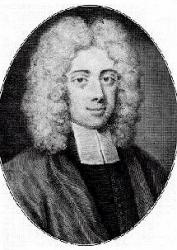
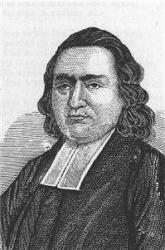
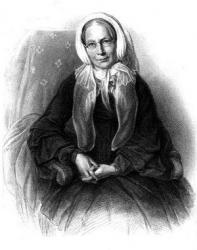
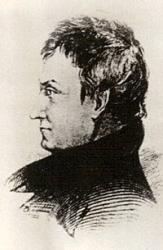
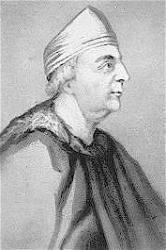
Export as CSV
John Burton
1773 - 1822 Hymnal Number: d146 Author of "Holy Bible, book divine, Precious treasure, thou art mine" in Sunday School Hymn Book Burton, John, born 1773, in Nottingham, where he resided until 1813, when he removed to Leicester, at which town he died in 1822. He was a Baptist, a very earnest Sunday School teacher, and one of the compilers of the Nottingham Sunday School Union Hymn Book, 1812. This book reached the 20th edition in 1861. The 1st edition contains 43 hymns which have his signature. He is known almost exclusively by one hymn, "Holy Bible, book divine" (q.v.). He was also author of The Youth's Monitor, and other similar productions for the young. Robert Hall wrote a recommendatory preface to one of his works. [Rev. W. R. Stevenson, M. A.]
-- John Julian, Dictionary of Hymnology (1907)
John Burton
Andrew Young
1807 - 1889 Hymnal Number: d428 Author of "There is a happy land, Far, [not] far away" in Sunday School Hymn Book Young, Andrew, second son of David Young, for more than fifty years a most efficient teacher in Edinburgh, was born at Edinburgh, April 23, 1807. After passing through a distinguished eight years' literary and theological course at the University of Edinburgh, he was appointed in 1830, by the Town Council, Head Master of Niddry Street School, Edinburgh, where he began with 80 pupils, and left with the total at 600. In 1840 he became Head English Master of Madras College, St. Andrews, where he was equally successful. He retired from St. Andrews in 1853, and lived in Edinburgh, where he was for some time the Superintendent of the Greenside Parish Sabbath School He died Nov. 30, 1889; Many of Mr Young's hymns and poems were contributed to periodicals. A collected edition of these was published in 1876, as The Scottish Highlands and Other Poems. His poems entitle him to rank in the first order of Scottish minor poets. Some of his hymns are very sweet. His "There is a happy land" (q. v.) has attained great popularity. [Rev. James Mearns, M.A.]
--John Julian, Dictionary of Hymnology (1907)
Andrew Young
Joseph Stennett

1663 - 1713 Hymnal Number: d350 Author of "Return, my soul, enjoy thy rest" in Sunday School Hymn Book The author was a Baptist preacher in London, from 1690, to his death in 1713.
--Annotations of the Hymnal, Charles Hutchins, M.A. 1872.
=============================
Stennett, Joseph, the earliest English Baptist hymnwriter whose hymns are now in common use, was born at Abingdon, Berks, in 1663. He received a superior education at the Grammar School of Wallingford, and at the age of 22 removed to London, where for several years he engaged in tuition. In 1688 he married a daughter of George Guill, a French Protestant refugee, another of whose daughters was the wife of the celebrated Presbyterian minister, Dr. Daniel Williams, who became a generous friend to Stennett. In the following year he was called to preach by the Baptist Sabbatarian congregation then meeting in Devonshire Square, London, afterwards in Pinners' Hall; and in 1690 became its pastor, a position he retained to his death, July 4, 1713. Since the meetings of this congregation for worship were on the seventh day of the week, he was free to preach to other congregations on the Sunday, which he did very frequently, especially to the General Baptist Church in the Barbican. Such was Stennett's repute for piety, learning and practical wisdom that his advice was very much sought by his Christian friends, and by the "great Whig Lords” of that day he was occasionally consulted as to the feeling of the Dissenters concerning national affairs. His published works include:—
(1) Hymns in commemoration of the Sufferings of our Blessed Saviour Jesus Christ, compos'd for the Celebration of his Holy Supper, 1697; 2nd ed. 1703 (This is entitled in Stennett's Works, 1732, Hymns for the Lord's Supper). These were 37 in number, increased to 50 in the 3rd edition, 1709. (2) In 1700 he published a poetical Version of Solomon's Song of Songs, together with the XLVth Psalm. A second edition, corrected, appeared in 1709. (3) In 1712 he published twelve Hymns composed for the Celebration of the Holy Ordinance of Baptism; 2nd ed. 1722.
Stennett also translated Dacier's Plato and other works from the French, and published several sermons preached on days of National Thanksgiving and other public occasions. His Works were collected after his death and published in 1732, in 4 vols. They contain a Memoir, Sermons and Letters, the Hymns and Poems mentioned above, and a few other poetical pieces. A controversial work, An Answer to Mr. Russen's Book on Baptism, 1702, may be reckoned as a 5th vol. Of his hymns, that which, in the form of varying centos, is most widely known is, "Another six days' work is done". Others in common use include:—
1. Gracious Redeemer, how divine. Holy Communion. Appeared in his Hymns for the Lord's Supper, first edition, 1697. (Works, 1732, ii. p. 98.) Usually abbreviated.
2. Immortal praise be given. Holy Communion. Published in his Hymns for The Lord's Supper, first ed., 1697. (Works, 1732, ii. p. 97.) From this "We'll praise our risen Lord," is taken.
3. Jesus, O word divinely sweet. Redemption through Jesus. Published in Hymns for the Lord's Supper, 3rd ed. 1709, No. 47.
4. Lord, at Thy Table I behold. Holy Communion. This hymn is not in Stennett's Works. From it "With humble faith and trembling heart," is taken.
5. My blessed Saviour, is Thy love? Self-Consecration to God. Appeared in his Hymns for the Lord's Supper, 1697, No. 22. Usually abbreviated.
6. The great Redeemer we adore. Published in his Hymns for Baptism, 1712.
7. Whene'er one sinner turns to God. Holy Baptism. Published in his Hymns for Baptism, 1712, No. 12. From this "See how the willing converts trace" is taken. It begins with st. iii.
Several of his hymns additional to these are given in the older collections, but have passed out of use. We may add that the Joseph Stennett, the subject of this article, had a son, Joseph Stennett, D.D., who also became an eminent Baptist minister, and was the father of Samuel Stennett. [Rev.W. R. Stevenson, M.A.]
--Excerpts from John Julian, Dictionary of Hymnology (1907)
Joseph Stennett
Samson Occom

1723 - 1792 Person Name: Samson Occum Hymnal Number: d518 Author of "When shall we three meet again" in Sunday School Hymn Book Occom, Samson (sometimes given as Ockum, and again as Occum), a Mohican Indian, was born at Norwich, Connecticut, in 1723. He was converted from Paganism under G. Whitefield, in 1739-40, and educated by the Revs. E. Wheelock and Benjamin Pomeroy. In 1748 he removed to Long Island and laboured amongst a remnant of his people. In 1759 he received Presbyterian orders, visited England, 1766-67, where he preached often (once for J. Newton at Olney), and with acceptance, and raised about ten thousand pounds for Dartmouth College, and for Indian education. His later life was spent first among his own race on Long Island, and, from 1786, in Oneida County, N.Y. He died in July, 1792. Occom's Choice Collection of Hymns and Spiritual Songs was published at New London, Connecticut, in 1774 (2nd ed. 1785). He is credited as the author of several hymns, but none of those hymns are found in his own collection. They are:—
1. Now the shades of night are gone. Morning. The date of 1770 is given to this hymn, but on insufficient authority. No evidence connects it with Occom, though it has not, on the other hand, been claimed for another. It is first found in the Hartford Congregational Collection, 1799, and was brought into general use by the Prayer-Book Collection, 1826. It is in several modern hymn-books.
2. Awaked by Sinai's awful sound. Peace with God. By this hymn, from its extensive use, Occom is chiefly known. We are satisfied, however, that in this form it is not his. It is first found in the Connecticut Evangelical Magazine, July, 1802, p. 39, "communicated as original." It is however altered from "Waked by the gospel's powerful sound," which is No. 285 in Josiah Goddard's Collection, Walpole, N. H.,1801, and possibly earlier, This older text is probably Occom's own composition.
3. When shall we three meet again? Parting. This once popular hymn has been ascribed to Occom, but the claim is doubtful. We find it in no collection earlier than Leavitt's Christian Lyre, 1830, although it is known to have been sung at an earlier date. It is sometimes given as, "When shall we all meet again?" as in H. W. Beecher's Plymouth Collection, 1855. [Rev. F. M. Bird, M.A.]
--John Julian, Dictionary of Hymnology (1907)
Samson Occom
J. Grigg
1720 - 1768 Person Name: Joseph Grigg Hymnal Number: d205 Author of "Jesus, and shall it ever be" in Sunday School Hymn Book Grigg, Joseph, was born in 1728, according to the D. Sedgwick’s Manuscript," but this date seems to be some six or eight years too late. He was the son of poor parents and was brought up to mechanical pursuits. In 1743 he forsook his trade and became assistant minister to the Rev. Thomas Bures, of the Presbyterian Church, Silver Street, London. On the death of Mr. Bures in 1747, he retired from the ministry, and, marrying a lady of property, look up his residence at St. Albans. He died at Walthamstow, Essex, Oct. 29, 1768. As a hymnwriter Grigg is chiefly known by two of his hymns, "Behold a stranger at the door"; and "Jesus, and can it ever be?" His hymnwriting began, it is said, at ten years of age. His published works of various kinds number over 40. Those in which his hymns are found are:—
(1) Miscellanies on Moral and Religious Subjects, &c, London, Elizabeth Harrison, 1756. (2) The Voice of Danger, the Voice of God. A Sermon Preached at St. Albans, and at Box-Lane, Chiefly with a View to the apprehended Invasion. By J. Grigg. London, J. Buckland, 1756. To this is appended his hymn, "Shake, Britain, like an aspen shake." (3) Four Hymns on Divine Subjects wherein the Patience and Love of Our Divine Saviour is displayed, London, 1765. (4) Hymns by the late Rev. Joseph Grigg, Stourbridge, 1806. (5) During 1765 and 1766 he also contributed 12 hymns to The Christians Magazine.
In 1861 D. Sedgwick collected his hymns and poems, and published them with a memoir as:
Hymns on Divine Subjects, * * * * London, 1861. This volume contains 40 "Hymns," and 17 "Serious Poems." In the “S. MSS." Sedgwick notes that in 1861 he omitted three hymns by Grigg, which were then unknown to him, viz.:—l) On "The National Fast," appended to a sermon preached at Northampton, Feb. 13, 1761, by W. Warburton, and published in London, 1761. (2) "A Harvest Hymn by the late Rev. Joseph Grigg," in 6 stanzas, in the Evangelical Magazine, July, 1822; and (3) On the Parable of Dives and Lazarus, dated "Feb. 15, 1767."
-- John Julian, Dictionary of Hymnology (1907)
J. Grigg
Ann Taylor

1782 - 1866 Person Name: Ann Taylor Gilbert Hymnal Number: d121 Author of "God is in Heaven, [and] can he hear" in Sunday School Hymn Book Gilbert, Ann, nèe Taylor, the elder of the two sisters, and daughter of Isaac Taylor, was born at London, Jan. 30, 1782, her father at that time being engaged in London as an engraver. Subsequently her father became a Congregational Minister, and resided, first at Colchester and then at Ongar. In 1813 she was married to the Rev. Joseph Gilbert, Classical and Mathematical Tutor at the Congregational College, Masborough, near Rotherham, Yorkshire. From Masborough they passed to Hull, and then to Nottingham, where Mr. Gilbert died in 1852. Mrs. Gilbert remained at Nottingham, and died there Dec. 20, 1866. In addition to contributing hymns to the joint works of herself and her sister Jane, a few were given in Collyer's Collection, 1812, signed " A." or "A. T.," and about 100 of her hymns appeared in Dr. Leifchild's Original Hymns, 1842, and a few in the Nottingham Hymn Book (1812, 20th edition, 1861). She published independently, Hymns for Sunday School Anniversaries, 1827; Hymns for Infant School, 1827; and The Wedding among the Flowers. Her Memoirs by her son, Josiah Gilbert, were published in 1874.
Mrs. Ann Taylor Gilbert is the author of the following (the date in brackets indicates the book in which each hymn appeared):—
1. Among the deepest shades of night (1812). Omniscience.
2. As Mary sat at Jesus' feet (1809). On repeating the Catechism.
3. Father, my spirit owns (1342). Resignation.
4. God is in heaven! Can he hear? God's care of Little Children.
5. Good Daniel would not cease to pray (1812). Prayer.
6. Hark the sound of joy and gladness (1842). Universal Peace.
7. How long, sometimes a day appears (1809). Time and Eternity.
8. I faint, my soul doth faint (1842). Contrition.
9. I thank the goodness and the grace (1809). Praise.
10. Jesus, that condescending King (1809). Coming to Jesus.
11. Jesus was once despised and low (1809). The Love of Jesus.
12. Jesus Who lived above the sky (1812). The Love of Jesus.
13. Lo, at noon, 'tis sudden night. Good Friday.
14. Lord, help us as we hear. Opening of Divine Service.
15. Lord, what is life? 'tis like a flower [the bow] (1809). Life.
16. My Father, I thank Thee for sleep (1809). Morning.
17. O [How] happy they who safely housed (1842). Death.
18. Spared to another spring (1827). Spring.
19. The God of heaven is pleased to see (1809). Brotherly Love.
20. This year is just going away (1810). New Year's Eve.
21. Wearied with earthly toil and care (1843). Sunday.
22. When I listen to Thy word. Comfort of the Scripture.
23. When little Samuel woke (1809). About Samuel.
24. Why should we weep for those who die (1843) . Death.
Mr. Gilbert's edition of the Hymns for Infant Minds, 1886, together with manuscript notes, are our authorities for the foregoing ascriptions of authorship. Mr. Gilbert cannot distinguish the authorship of the following hymns by her or her sister, Jane Taylor:—
1. Good David, whose Psalms have so often been sung (1812). Concerning David.
2. If Jesus Christ was sent (1812). Repentance.
3. King Solomon of old (1812). Concerning Solomon.
Taken as a whole, her hymns are somewhat depressing in tone. They lack brightness and warmth.
-- John Julian, Dictionary of Hymnology (1907)
Ann Taylor
David Nelson

1793 - 1844 Hymnal Number: d270 Author of "For O, we stand on Jordan's strand" in Sunday School Hymn Book Nelson, David, M.D., son of Henry Nelson, was born near Jonesborough, East Tennessee, Sept. 24, 1793. He graduated at Washington College, Virginia, in 1810, and took his M.D. degree at Philadelphia in 1812. He acted for some time as a surgeon in the war against Great Britain. During that time he became an infidel, but returning to the faith, he, in 1823, resigned medicine and took up theology, and subsequently became a Presbyterian Minister. He held several appointments, and founded two manual-labour colleges, one at Greenfields, and the second near Quincy, Illinois. He died Oct. 17, 1844. His hymn, "My days are gliding swiftly by" (Death Anticipated), was written in 1835, to be sung to the tune of "Lord Ullin's Daughter." It is exceedingly popular. [Rev. F. M. Bird, M.A.]
--John Julian, Dictionary of Hymnology (1907)
David Nelson
Samuel Wesley

1662 - 1735 Hymnal Number: d40 Author of "Behold the Savior of mankind" in Sunday School Hymn Book Father of Samuel Wesley, John Wesley, and Charles Wesley.
See also in: Hymn Writers of the Church
======================================================================================================
Samuel Wesley, M.A., the elder, was born in 1662 at Whitchurch in Dorsetshire, of which parish his father, John Wesley, was Vicar until the Act of Uniformity caused him to resign his living. He was educated at a Dissenting academy by a Mr. Morton, and was designed for the Nonconformist Ministry. But having been, on account of his talents, selected as a champion to defend the dissenters against some severe invectives, and having commenced a course of controversial reading for this purpose, he was led by his studies to embrace the opposite views, and became, and continued through life, a pronounced churchman. With the impetuosity which was a family trait, he set forth on foot to Oxford, and entered himself at Exeter College. In spite of his straitened means, he managed to keep his terms and take his degrees at the University.
He then received Holy Orders and took a curacy of £28 a year. Having held this curacy for a year, he obtained a naval chaplaincy, and then took another curacy in London. About the year 1690 he married Susanna, daughter of Dr. Annesley, a famous Nonconformist minister, and a scion of the noble house of Anglesey. The wife, like the husband, had been brought up as a dissenter, but at the early age of 13 she had come over to the Church of England, and was afterwards a Jacobite in politics. In 1693 Mr. Wesley was presented to the living of South Ormsby in Lincolnshire. He was also chaplain to the Marquis of Normandy, afterwards Duke of Buckingham. In 1697 he was appointed by the Crown to the Rectory of Epworth, and there he spent the remainder of his life, nearly forty years. The first part of his residence at Epworth was marked by a series of troubles arising partly from his pecuniary embarrassments, which increased with his increasing family, partly from the animosity of his parishioners, who resented the part which he felt it his duty to take, as a staunch churchman, in politics, and partly from unfortunate accidents. These troubles reached their climax in 1705, when he was thrown into Lincoln gaol for debt. They are graphically described by his own pen.
"I have been thrown behind," he writes to his good friends at Oxford, "by a series of misfortunes. My Parsonage Barn was blown down ere I had recovered the Taking my Living; My House great part of it burnt down about 2 years since. My Flax, great part of my Income now in my own Hands, I doubt wilfully fir'd and burnt in ye night, whilst I was last in London. My Income sunk about one half by the low price of Grain and my credit lost by the taking away my Regiment. I was brought to Lincoln Castle June 23rd last past. About 3 weeks since my very unkind People, thinking they had not yet done enough, have in ye night stabbed my 3 cows, wch were a great part of my poor Numerous Family's Subsistence.—For wch God forgive them."
Some points in this letter require explanation. When he speaks of being in London, he means on Convocation business; for he was elected Proctor for the Diocese, and in one of his absences Mrs. Wesley instituted those religious meetings at the Rectory which are thought by some to have been the precursors of the Wesleyan Society Meetings. “His Regiment" was a Chaplaincy in the army which had been given him in reward for a poem in praise of the Duke of Marlborough. The last and worst of the many fires through which he suffered was in 1709, when the rectory was entirely burnt down, and the present house erected in its place. The latter part of his time at Epworth was more free from troubles. He met with many generous friends who enabled him to emerge from his pecuniary difficulties, the firmest and most constant of these friends being the admirable Archbishop of York, Dr. John Sharp; his sons grew up to be a comfort and a credit to him; his income was slightly increased by the addition of the neighbouring living of Wroot; and his parishioners gradually became more tractable. The annoyance caused by the famous Epworth Ghost can scarcely be reckoned among his serious troubles. In 1731 he met with an accident which probably hastened his end, and in 1735 he passed away and was buried in Epworth churchyard, leaving behind him the character of an excellent parish priest, a good husband and father, and a man of very considerable abilities and attainments.
Mr. Wesley was a somewhat voluminous writer. His first publication was a volume of poems bearing the unpromising, not to say repulsive, title of Maggots. It appeared in 1685. In 1691 he became the clerical correspondent to the Athenian Gazette (afterwards Mercury) published by his brother-in-law, John Dunton. In 1693 appeared an Heroic Poem on the Life of Our Blessed Lord and Saviour Jesus Christ. This was dedicated to Queen Mary, and led to his appointment to the living of Epworth. In 1695 he published Elegies on Queen Mary and Archbishop Tillotson; and in 1698 A Sermon preached before the Society for the Reformation of Manners. The Elegies are rather fulsome and in bad taste according to the standard of the present day; but it should be remembered that high-flown panegyrics were the fashion of the age. The Sermon is a spirited and energetic defence of the "Societies," which were regarded with some suspicion by many high-churchmen, but of which Mr. Wesley, like his friend Robert Nelson, was a warm supporter. In 1700 he published The Pious Communicant rightly prepared; or a Discourse concerning the Blessed Sacrament, &c, With Prayers and Hymns suited to the several parts of that holy office. To which is added A short Discourse of Baptism. In this work appeared his version of the "Great Hallel" or "Paschal Hymn." In 1704 he published The History of the Old and New Testaments in Verse, in three volumes, which he dedicated to Queen Anne. This, like his Life of Christ, was illustrated with numerous and costly engravings. In 1705 he published a poem of nearly 600 lines on the "Battle of Blenheim," entitled Maryborough, or The Fate of Europe. For this he was rewarded with the Chaplaincy of Colonel Lepell's regiment; but his political enemies at Epworth soon succeeded in getting him deprived of this office. In 1707 appeared A Reply to Mr. Palmer's Vindication of the Learning, Loyalty, Morals, and most Christian Behaviour of the Dissenters towards the Church of England. This originated in the publication, without his consent or knowledge, of a Letter he wrote to a friend Concerning the Education of the Dissenters in their Private Academies. The letter was attacked anonymously and defended by Mr. Wesley in a pamphlet (1704). The pamphlet was answered by Mr. Palmer. After this, Mr. Wesley's pen seems to have rested for some time; but during the last ten years of his life he was engaged in his elaborate Dissertation on the Book of Job, his incessant labours upon which are said to have hastened his end. This work was dedicated to Queen Caroline, the wife of George II., and presented to her by John Wesley some months after the author's death.
Perhaps if he had written less, and spent more time in elaborating what he did write, he might have been more successful; but, after all, the "Divine afflatus" must have been wanting; and the best service which he rendered to sacred poetry was in being father of his children.
Two of his hymns are in common use:—
1. Behold the Saviour of mankind.
2. 0 Thou Who, when I did complain.
-- Excerpts from John Julian, Dictionary of Hymnology (1907)
Samuel Wesley
Howard Kingsbury
1842 - 1878 Person Name: Howard Kinsbury Hymnal Number: d328 Author of "Once was heard the songs of children" in Sunday School Hymn Book Kingsbury, Howard. This name is associated with the popular hymn in days gone by, "Come, let us all unite and sing, God is love!" (God is Love), but concerning the same we have failed to gain any information. We know personally that the hymn was in common use nearly forty years ago (circa 1850).
--John Julian, Dictionary of Hymnology, Appendix, Part II (1907)
Howard Kingsbury
Joseph Hoskins
1745 - 1788 Hymnal Number: d39 Author of "Behold, behold the Lamb of God, On the cross" in Sunday School Hymn Book Hoskins, Joseph, was born in 1745, but at what place is unknown. He was a Congregational Minister, who for ten years laboured with great success at Castle Green Chapel, Bristol, and died Sept. 28, 1788, aged 43. During the three years previous to his death ho had written 384 hymns, which in the year following, after correction and revision, were published by Messrs. Moody & Bottomley, Congregational Ministers. The book is entitled, Hymns on Select Texts of Scripture and Occasional Subjects (Bristol, 1789). From this work the following hymns are in common use:—
1. Alas! my [the] Lord my Life is gone. Spiritual darkness and death.
2. Great Light of life, Thou nature's Lord. God, the True Light.
3. In Thy great Name, 0 Lord, we come. Divine Worship.
4. 0 how the hearts of those revive. Joy in Salvation.
5. Prisoners of sin and Satan too. Hope.
6. Saviour of sinners, deign to shine. Christ's light desired.
7. The time is short, ere all that live. Shortness of Time.
Hoskins's hymns are said to have been greatly esteemed by his friends and hearers, but they have little poetic merit. [Rev. W. R. Stevenson, M.A.]
-- John Julian, Dictionary of Hymnology
======================
Hoskins, J., p. 535, ii. Additional pieces from his Hymns, &c, 1789, in common use, in America include:— (1) "Let thoughtless thousands choose the road" (Life in Christ), p. 312; (2) "To-day the Saviour rose" (Easter), p. 364; (3) "Behold, behold the Lamb of God" (Invitation!), p. 242.
--John Julian, Dictionary of Hymnology, Appendix, Part II
============
Hoskins, Joseph, pp. 535, ii., 1571, ii. The following additional hymns by Hoskins are in The New Psalms and Hymns (Presbyterian), Richmond, Va., 1901:—
1. It shall be well, let sinners know. The Promises of God.
2. Sinners, behold the Lamb of God. The Atonement; and in the Book of Worship with Hymns and Tunes ... of the Evang. Lutheran Church, Philadelphia, 1899:—
3. On Christ, by faith, my soul would live, from "Let thoughtless thousands," &c. p. 1571, ii. These hymns are from his Hymns, &c, 1789. [Rev. James Mearns, M.A.]
--John Julian, Dictionary of Hymnology, New Supplement (1907)
Joseph Hoskins


 My Starred Hymns
My Starred Hymns


